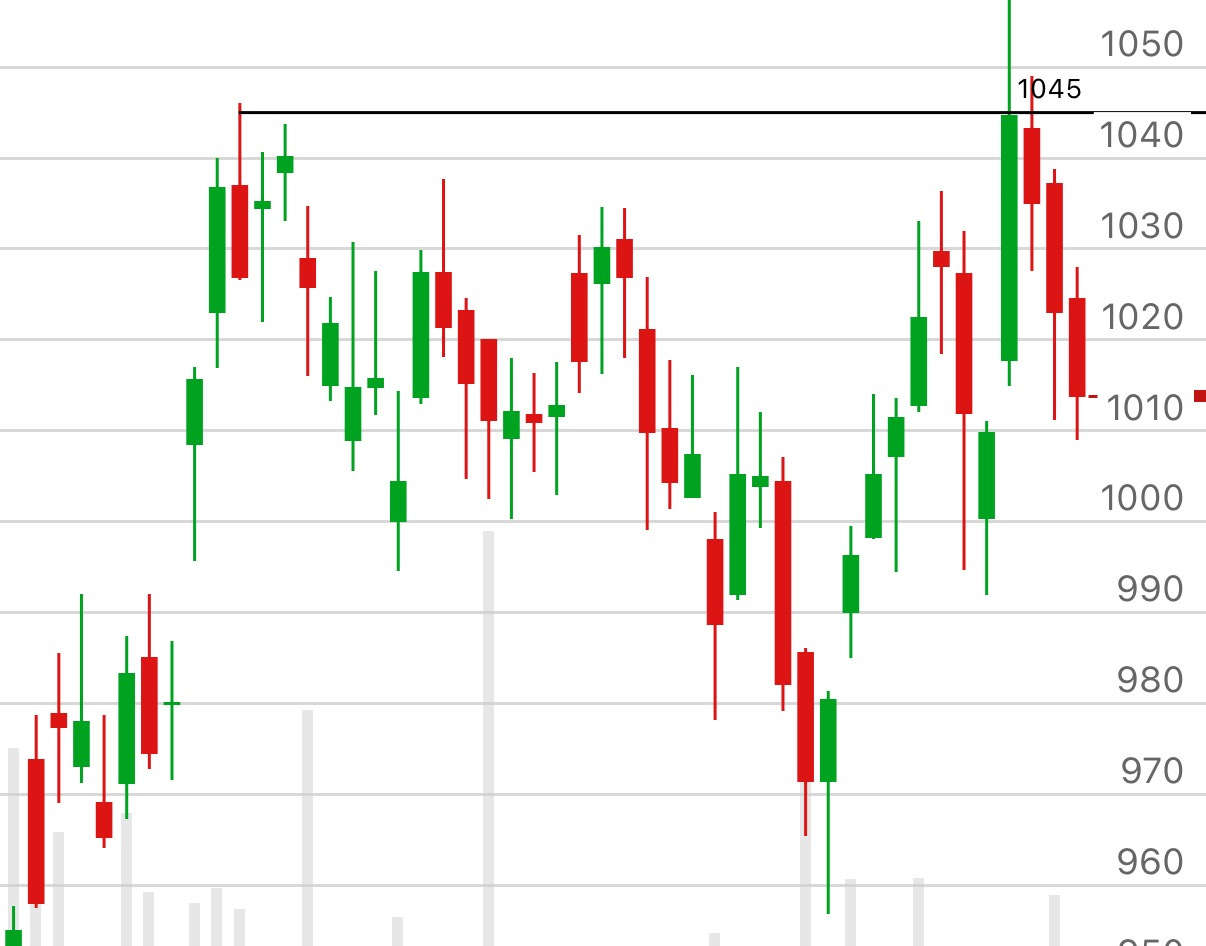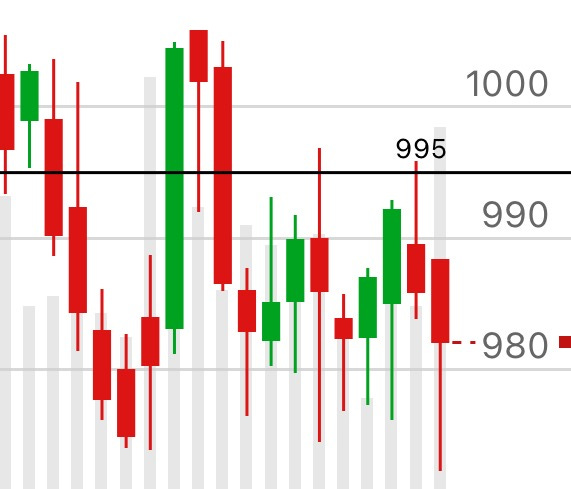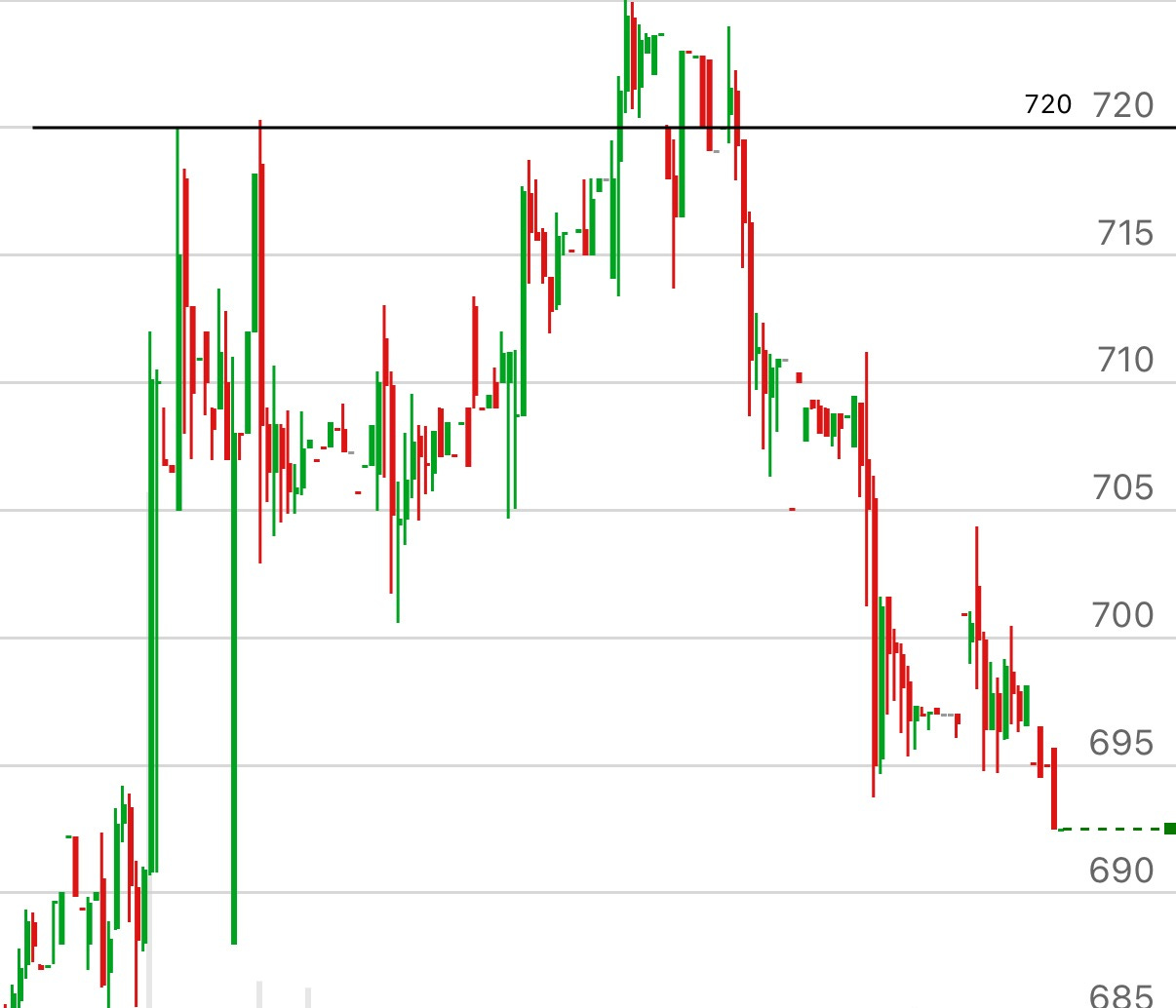When Breakouts Start Failing, Pay Attention
In momentum trading, there’s one subtle but deadly shift that often precedes broader market weakness: the fake breakout.
This is something I’ve learned the hard way, and I bet many of you have too. Those moments in the market where everything looks like it’s about to explode higher… until it doesn’t. You know the setup. A stock pushes cleanly through resistance with momentum, volume, and that unmistakable "here we go" energy — only to reverse later in the session and leave you bag-holding, blinking at your screen, wondering what the hell just happened.
Lately, we’ve been seeing this kind of action creep in again. And it’s not just one or two stocks misfiring — it’s a pattern that’s building, and across sectors no less. Let me give you a few examples that really stood out this week:
NOW 1045: Looked ready to continue its breakout run, but couldn't hold above that level.
COST 995: Broke through resistance briefly, then reversed sharply.
GS 720: Showed intraday strength that was quickly rejected.
And that’s just a few names. Throw in ORCL 238 and APP 350, even names like AAPL and META are showing similar signs in moments — flashes of strength that just don’t hold. These aren’t penny stocks or illiquid trash. These are some of the biggest names in the market, across software, financials, tech, and retail. And when this many leaders start faking out at key levels… it’s no longer just about individual stocks. It’s about market tone shifting.
The Market Speaks Softly at First... Then It Yells
I used to brush off these kinds of patterns. A failed breakout here, a missed move there. No big deal, right? But when I look back at every stretch of time where I gave back money unnecessarily, every slow bleed period in my P&L, they almost always started this way. Not with a crash. Not with panic. But with setups that should work, just… not quite sticking.
The problem is, fake breakouts don’t feel dangerous in real time. They feel like “almost.” They tease you. They get you to lean in, to trust the setup, to size up. And if you’re not careful, they’ll lure you into overtrading and revenge mode before the broader market has even started to roll.
Today, the QQQ gave us a perfect example. It broke through 557 in the morning. New highs, clean structure, seemingly strong internals. But then, just like the others, it couldn’t hold. By the close, the gains were gone, and the candle looked average. Momentum had flipped, and it wasn’t subtle. And this is after multiple sessions of individual names showing weakness. The index is often the last to go. When it joins the party, that’s when you know the tide has turned.
What to Do When You Spot the Shift
When I start to see this pattern, I shift my posture immediately. I don’t wait for confirmation from CNBC or some macro event. The tape is enough. And here’s what I’ve learned to do:
Size Down. If breakouts aren’t sticking, your edge is reduced. Preserve capital. I don’t get paid to hope. I get paid for continuation. No continuation, no size.
Stay Patient. You don’t need to force trades in choppy tape. Most of the time, these shifts don’t last forever. But they do require a different playbook. And sometimes the best trade is to not trade, but to wait for the fog to lift and for clarity to return.
Stay Selective. Failed breakouts often lead to the sharpest down moves, especially in extended names with weak relative strength. During these times I get picky. Ridiculously picky. If something isn’t lining up perfectly and holding its breakout intraday, I pass. No "maybe this one works" trading. That mindset will drain you.
Look for Short Setups. And when I feel ready, and I see setups failing cleanly, I start watching for short entries. Not because I’m a natural short-biased trader, but because failed breakouts often turn into some of the cleanest down moves, especially in extended names with poor relative strength.
I’ve learned, sometimes painfully, that these market moments are where pros and amateurs really separate. Amateurs keep pressing the same buttons, expecting the same results. Pros pause, reassess, and wait for the wind to turn back in their favor.
Respect the Subtle Shifts Before They Aren’t So Subtle
You don’t need to call a top. You don’t need to predict a crash. You just need to notice when what used to work... stops working. That’s the job. Fake breakouts are one of the market’s most honest tells. They’re like the hesitation before a dancer misses a beat. Small at first. Easy to miss. But if you’re tuned in… they speak volumes.
Don’t ignore them. Don’t chase every setup hoping this one will be different. Step back, protect your capital, and wait for the tape to tell you it’s safe to go again. Because when it is, and it always eventually is, you’ll want to be sharp, focused, and fully loaded.
Not tired. Not frustrated. Not fighting yesterday’s tape. That’s the difference.






